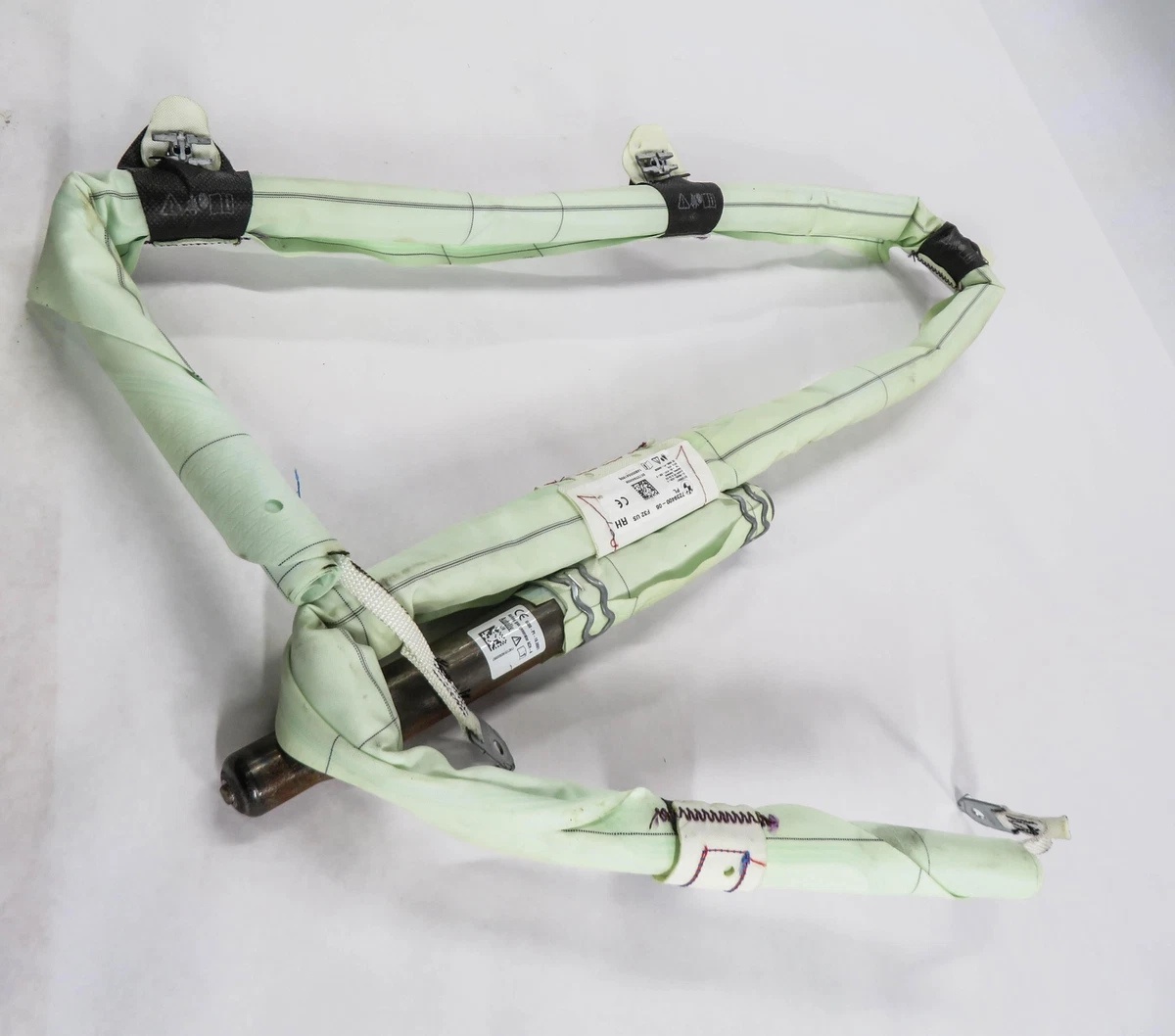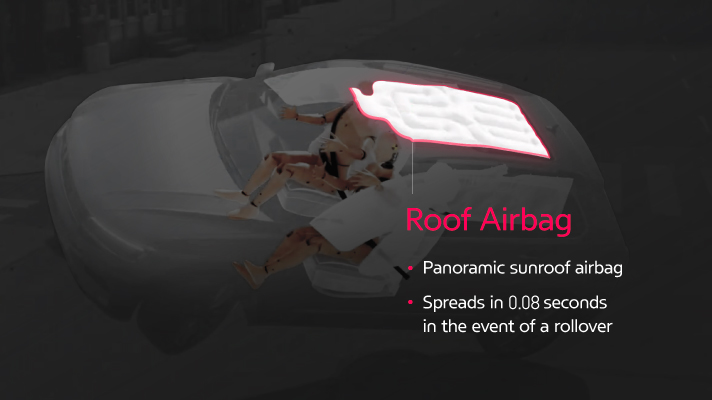Welcome! In this article, we will be exploring the safety features of the BMW F32 Roof Air Bag. You will learn about the key aspects that make this roof airbag an important component in ensuring your safety while driving.
Firstly, let’s talk about the rivets that secure the BMW F32 Roof Air Bag. These rivets play a crucial role in keeping the airbag in place during a collision. They are specifically designed to withstand the high forces that occur during accidents, providing you with a reliable safety feature. Additionally, the placement of these rivets ensures optimal deployment of the airbag, safeguarding you and your passengers in the event of a collision.

This image is property of i.ebayimg.com.
Exploring the Safety Features of the BMW F32 Roof Air Bag
Overview
What is the BMW F32 Roof Air Bag?
The BMW F32 Roof Air Bag is a safety feature designed to enhance passenger protection in the event of a rollover accident or side collision. It is integrated into the vehicle’s roof structure and deploys rapidly to provide an additional cushioning effect, reducing the risk of head and neck injuries.
Importance of Safety Features in Vehicles
Safety features in vehicles play a critical role in protecting the lives and well-being of both drivers and passengers. With advancements in technology, automotive manufacturers have made significant progress in improving overall vehicle safety. The BMW F32 Roof Air Bag is one such innovation that adds an extra layer of protection to ensure passenger safety.
Functionality
How does the BMW F32 Roof Air Bag Work?
The BMW F32 Roof Air Bag utilizes sophisticated sensors to detect rollover or side collision situations. When an incident is detected, the airbag system automatically activates, rapidly inflating the roof airbag within milliseconds to provide a cushioning effect for occupants. This reduces the risk of head and neck injuries by minimizing the impact forces exerted on the passenger’s upper body.
Deployment Mechanism
The deployment mechanism of the BMW F32 Roof Air Bag is designed to ensure quick and effective inflation during emergencies. Upon sensing a rollover or side collision, the airbag control unit triggers the deployment sequence, which initiates the release of compressed gas into the airbag module present in the vehicle’s roof. This gas rapidly inflates the airbag within milliseconds, providing immediate protection to the occupants.
Role of Sensors in Activation
The effectiveness of the BMW F32 Roof Air Bag is largely dependent on the sensors integrated into the vehicle. These sensors continually monitor factors such as vehicle stability, acceleration, and deceleration. In the event of a rollover or side collision, the sensors detect the sudden changes in movement and transmit signals to the airbag control unit, which then activates the airbag system to deploy the roof airbag.
Design and Structure
Composition of the BMW F32 Roof Air Bag
The BMW F32 Roof Air Bag is typically composed of a lightweight, tear-resistant fabric material designed to withstand the forces exerted during inflation. The airbag is inflated with compressed gas, typically nitrogen, which is used due to its inert properties and ability to rapidly inflate the airbag.
Integration with Vehicle’s Roof Structure
The BMW F32 Roof Air Bag is seamlessly integrated into the vehicle’s roof structure to maximize protection for the occupants. This integration ensures that the airbag deploys in a controlled manner, staying in position to effectively cushion the head and neck areas. The location and size of the airbag are determined through extensive safety testing to optimize protection in various scenarios.
Material Selection and Durability
The materials used in the construction of the BMW F32 Roof Air Bag are carefully chosen to meet stringent safety requirements. The tear-resistant fabric is reinforced with advanced weaving techniques to ensure durability and structural integrity during deployment. These materials undergo rigorous testing to withstand the forces exerted during inflation and provide reliable protection for vehicle occupants.
This image is property of f30.bimmerpost.com.
Safety Standards and Testing
Compliance with International Safety Regulations
The BMW F32 Roof Air Bag is designed to meet or exceed international safety regulations, including those set by organizations such as the National Highway Traffic Safety Administration (NHTSA) and the European New Car Assessment Programme (Euro NCAP). These regulations set specific standards for crashworthiness and occupant protection, ensuring that vehicles with roof airbags provide effective protection in rollover accidents and side collisions.
Crash Tests and Impact Resistance
To ensure the effectiveness of the BMW F32 Roof Air Bag, it undergoes extensive crash testing as part of the vehicle’s overall safety evaluation. This testing includes simulated rollover and side collision scenarios to evaluate the airbag’s impact resistance and performance. The airbag system is meticulously designed to absorb and distribute impact forces, minimizing the risk of severe injuries to the occupants.
Evaluation of Effective Protection
The BMW F32 Roof Air Bag is evaluated based on its ability to provide effective protection during rollover accidents and side collisions. Advanced crash test dummies equipped with sensors are used to simulate real-world scenarios and measure the forces exerted on the occupants. The data collected during these tests helps engineers fine-tune the airbag system for optimal performance and occupant safety.
Accident Scenario
Benefits in Rollover Accidents
Rollover accidents pose a significant threat to vehicle occupants due to the increased risk of head and neck injuries. The BMW F32 Roof Air Bag offers crucial protection in such scenarios by deploying rapidly and creating a cushioning effect to reduce the impact forces on the occupants’ upper bodies. This significantly decreases the risk of severe injuries, improving the chances of survival and reducing long-term health complications.
Protection Against Side Collisions
Side collisions can result in substantial injuries, especially when the vehicle is struck on the side where occupants are seated. The BMW F32 Roof Air Bag helps mitigate the risk of head and neck injuries by providing an additional layer of cushioning in the event of a side impact. The airbag deploys swiftly, reducing the occupants’ exposure to the intruding vehicle or other objects, thus minimizing the potential for severe injury.
Additional Injury Prevention Measures
In addition to the BMW F32 Roof Air Bag, BMW engineers have integrated various safety measures to enhance overall occupant protection. These include reinforced side impact beams, strategically placed crumple zones, and other structural reinforcements. All these elements work in synergy to provide comprehensive protection in the event of accidents, reducing the likelihood of severe injuries.

This image is property of i.ebayimg.com.
Maintenance and Inspection
Periodic Inspection Requirements
It is essential to ensure that the BMW F32 Roof Air Bag is periodically inspected as part of routine vehicle maintenance. Regular inspections help identify any potential issues or malfunctions that may affect the airbag’s performance during an accident. It is recommended to follow the manufacturer’s guidelines for inspection intervals and have the airbag system checked by a certified technician.
Potential Wear and Tear Issues
Over time, the BMW F32 Roof Air Bag may be subject to wear and tear, just like other components in the vehicle. Factors such as exposure to extreme temperatures, moisture, and sunlight can degrade the airbag’s fabric material. It is crucial to inspect the airbag for any signs of damage or deterioration, such as tears, discoloration, or deformation, which may compromise its functionality.
Replacement and Repair Procedures
If any damage or malfunction is detected during inspections, it is essential to have the BMW F32 Roof Air Bag repaired or replaced promptly. Repairs should only be performed by qualified technicians with extensive knowledge of the airbag system. Replacement components should meet the manufacturer’s specifications and requirements to ensure proper functionality and protection in the event of an accident.
User Manual and Guidelines
Proper Seat Positioning for Maximum Protection
To maximize the effectiveness of the BMW F32 Roof Air Bag, it is crucial to ensure proper seat positioning. Occupants should sit upright with their backs against the seat, ensuring that the headrest is properly adjusted to align with the back of the head. This positioning allows the airbag to deploy in the intended manner, providing optimal protection for the head and neck areas.
Use of Seat Belts in Conjunction with Air Bag
The BMW F32 Roof Air Bag is designed to work in tandem with seat belts to provide comprehensive protection for the occupants. It is important to always wear seat belts and ensure they are properly fastened. The seat belt restrains the occupant during sudden changes in motion, while the airbag cushions the upper body, minimizing the risk of severe head and neck injuries.
Limitations and Precautions for Optimal Functioning
While the BMW F32 Roof Air Bag is a valuable safety feature, it is important to understand its limitations and take necessary precautions for optimal functioning. The airbag is designed to provide protection in specific types of accidents, such as rollovers and side collisions. It may not deploy in frontal or rear-end collisions. Therefore, it is crucial to drive responsibly and follow traffic regulations to minimize the risk of accidents.

This image is property of i.ytimg.com.
Comparative Analysis
Comparison with Other Vehicle Models
When compared to other vehicle models, the BMW F32 Roof Air Bag stands out for its innovative design and advanced safety features. The integration of the roof airbag system provides enhanced protection, particularly in rollover accidents and side collisions. Vehicle occupants can benefit from the added cushioning effect, reducing the risk of head and neck injuries.
Advantages and Disadvantages
The advantages of the BMW F32 Roof Air Bag are numerous. It significantly reduces the risk of severe head and neck injuries during rollover accidents and side collisions. The rapid deployment ensures immediate protection for the occupants, enhancing their chances of survival. However, the main disadvantage is that the airbag system may not deploy in all types of accidents, so it is important to exercise caution and follow safe driving practices.
Innovations in Safety Features
The BMW F32 Roof Air Bag is a testament to the continuous advancements in vehicle safety technology. As automotive manufacturers strive to improve occupant protection, innovations such as the roof airbag system have become more prevalent. These advancements not only provide enhanced safety but also contribute to building a safer driving environment for everyone on the road.
Consumer Feedback
Perceptions and Experiences of BMW F32 Roof Air Bag Users
Users of the BMW F32 Roof Air Bag have generally reported positive experiences and high satisfaction regarding the effectiveness of the safety feature. Many have praised the airbag system for its rapid deployment and its ability to reduce the risk of head and neck injuries in rollover accidents and side collisions. Users appreciate the added peace of mind that the BMW F32 Roof Air Bag provides.
Satisfaction with Safety Features
The safety features in the BMW F32, including the Roof Air Bag, have contributed greatly to customer satisfaction. Vehicle owners value the manufacturer’s commitment to prioritizing occupant safety and appreciate the attention to detail in designing advanced safety systems. The integration of the Roof Air Bag is seen as a valuable addition that enhances the overall safety of the vehicle.
Improvements and Recommendations
While the BMW F32 Roof Air Bag has received positive feedback, some users have suggested a few improvements. These include further refinement of the airbag deployment mechanism to prevent false activations and the addition of technology to detect potential hazards or collisions before they occur. These suggestions reflect consumers’ desire for constant advancements in safety features to provide the highest level of protection.

This image is property of i.ebayimg.com.
Conclusion
Summary of BMW F32 Roof Air Bag Features
The BMW F32 Roof Air Bag is a crucial safety feature designed to enhance occupant protection in rollover accidents and side collisions. Integrated into the vehicle’s roof structure, the airbag system deploys rapidly to reduce the risk of head and neck injuries by minimizing the impact forces on the occupants’ upper bodies. The BMW F32 Roof Air Bag is a testament to the continuous advancements in vehicle safety, providing added peace of mind for both drivers and passengers.
Importance of Continuous Advancements in Vehicle Safety
The development and implementation of advanced safety features, such as the BMW F32 Roof Air Bag, highlight the importance of continuous advancements in vehicle safety. As technology progresses, automotive manufacturers must strive to improve occupant protection, reduce the severity of injuries, and enhance overall safety. The BMW F32 Roof Air Bag serves as an example of the industry’s commitment to creating safer roadways and protecting lives.

